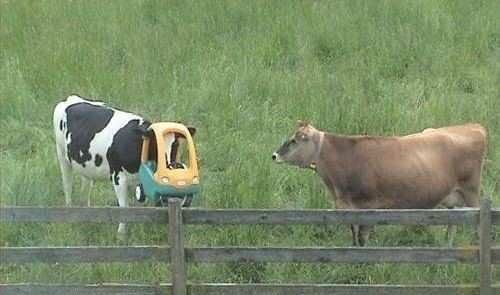Curiosity Fuels Creativity
 Creativity generates things that are novel and useful. Make them successful, and you’ve got innovation. There can be no innovation without creativity.
Creativity generates things that are novel and useful. Make them successful, and you’ve got innovation. There can be no innovation without creativity.
We associate creativity with innate ability that only some have; with transparent happenings that can’t be codified; with eureka moments that come from the subconscious. If anything defies process, it’s creativity. So let’s not use process to squelch creativity, let’s foster behaviors that spawn creativity.
Curiosity is the kindling for creativity; fan its flames and creativity ignites. There a two parts to curiosity – to see things as they are and to propose what could be.
To see things as they are is to create awareness of what is – awareness of context, or changes in context, awareness of worn paths and anomalies, and awareness at high and low levels of abstraction. It takes a disciplined, uncluttered mind to become aware of a new reality, especially while sitting in the old one. And because uncluttering comes only from slack time, to see things as they are is doubly difficult.
The next part of curiosity is to challenge what is in order to propose what could be. To start, root cause must be understood for the new what is. This requires active rejection of old fundamentals and a deep dive to understand new ones. This is toughest when the old fundamentals have been (and are still) successful. (And it’s doubly tough because it requires slack time.) Curiosity twists, pounds, and bends the new fundamentals into a future reality which culminates with a proposal of what could be. Done right, curiosity’s proposal is borderline heretical.
The good news is we don’t need new people – we have plenty of creative capacity. But here’s the bad news – our process thinking isn’t going to get us there because it’s all about behaviors. It’s time to think about how to change things so we can spend more time on behaviors that generate creativity. But if you must use process thinking, come up with a process that lets us spend more time on creative behaviors
The thinking (and some of the language) for this post came from Diego Uribe, a true thought leader in creativity. Thank you Diego.
 Mike Shipulski
Mike Shipulski
About this picture: Was this an innovative rancher using a toy car as a feed bucket, or just a dumb cow that got her head stuck after sticking it into the toy thinking it was a new feed trough? I guesss it is a creative result either way, but it affects whether the article hypthesis applies. (Even a blind squirrel finds a nut once in a while.)
I think the picture is suppose to lend itself to curiosity; the cow being the curious one.